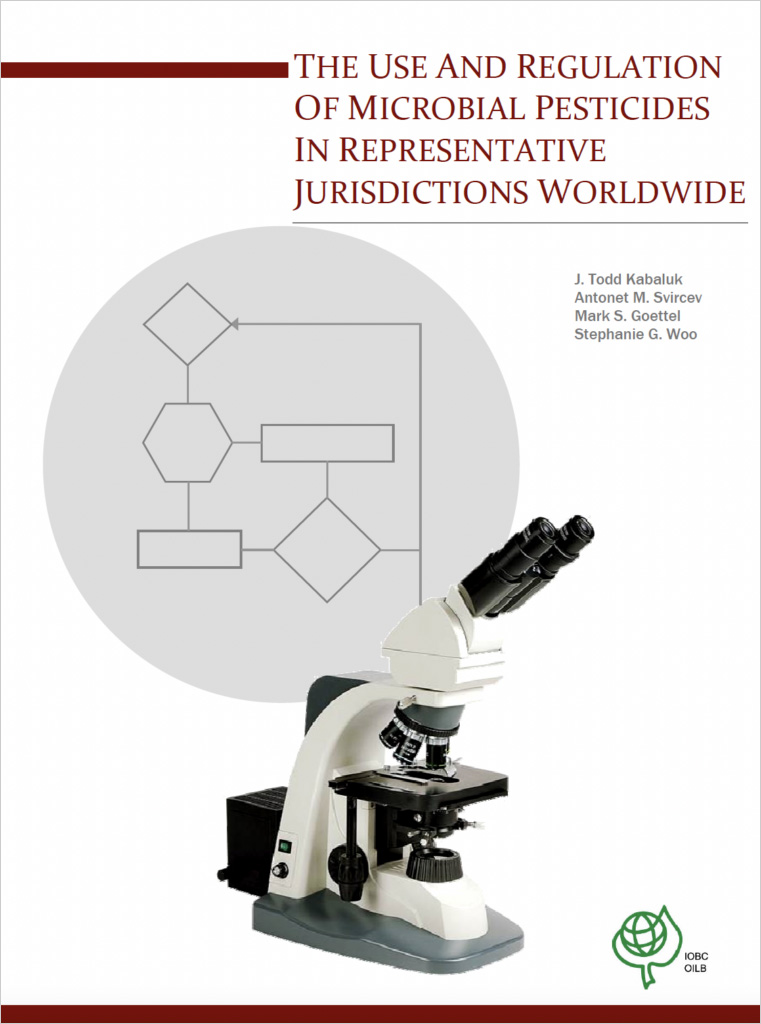
The Use and Regulation of Microbial Pesticides in Representative Jurisdictions Worldwide
€ 0.00
When there is potential for harm to human and environmental health from the introduction of a pest control product, regulatory procedures for pre-market assessment of safety are common in most countries. An effective regulatory framework provides protection from harm, while still facilitating the availability of useful products. It recognizes the needs of farmers, society, and the commercial interests of the pest control product proponents i.e. registrants. The latter are recognized by being provided clear communication of the terms of the regulatory system and the stepwise process of product registration, and by being charged reasonable costs for registration so products move seamlessly from the application for registration through to the market.
It is commonly agreed that one way to streamline and speed product registration processes is through international harmonization of a regulatory framework e.g. for data requirements, fees, timelines, criteria for approval, and risk assessments. Indeed, major steps have been taken to increase both the harmonization and transparency of data requirements and the procedures for risk assessment at OECD, North American, and European Union levels. It should be borne in mind, however, that while harmonization is desirable, because microbial agents have a wide range of mechanisms of action, and because their properties are generally poorly understood relative to chemical pesticides, regulatory assessment frameworks must retain a degree of flexibility and reliance on expert opinion in order to comply with the “intra- and interspecific variation of microorganisms and their constituents” (Mensink and Scheepmaker 2007).
The presentation of the regulatory systems in the following chapters provides a means to compare and contrast the variety of approaches taken by selected jurisdictions (countries or groups of countries) in establishing a framework that offers protection from harm, while offering pest control products with utility for farmers, and their degree of success in doing so. Harmonization activities will be apparent, particularly among member states of the European Union and between Canada and the United States, the latter of which is evolving rapidly. Significant gains are still to be made in Africa, but in the meantime, continental harmonization is loosely achieved by following principles of the Food and Agriculture Organization for the registration of synthetic pesticides. The regulation of pesticides among the Newly Independent States of the former Soviet Union has understandably become disjointed, and despite Ukraine being the birthplace of microbial pest control, microbial pesticide use in Eastern European countries is minimal. China demonstrates, however, that a regulatory system can be created rapidly and streamline the inherent complexity involved in the widespread use of unregistered and unformulated active ingredients. India too has experienced a rapid development of microbial pesticide programming in support of poorer farmers and to support the continuing biotechnological advancements arising from Green Revolution of the 1980s. Cuba may in fact be a leader in the use of microbial pesticides under the state mandate of ecologically-based pest management, together with a network of state-supported microbial pesticide production facilities to supply the agricultural sector.
These chapters also indicate the degree to which countries have provided institutional support of microbial pesticides in facilitating their development and adoption, and show the international reach of microbial strains and products. While we recognize that taxonic revisions of certain microorganisms have taken place in recent years, we have retained classifications as they appear on product labels.